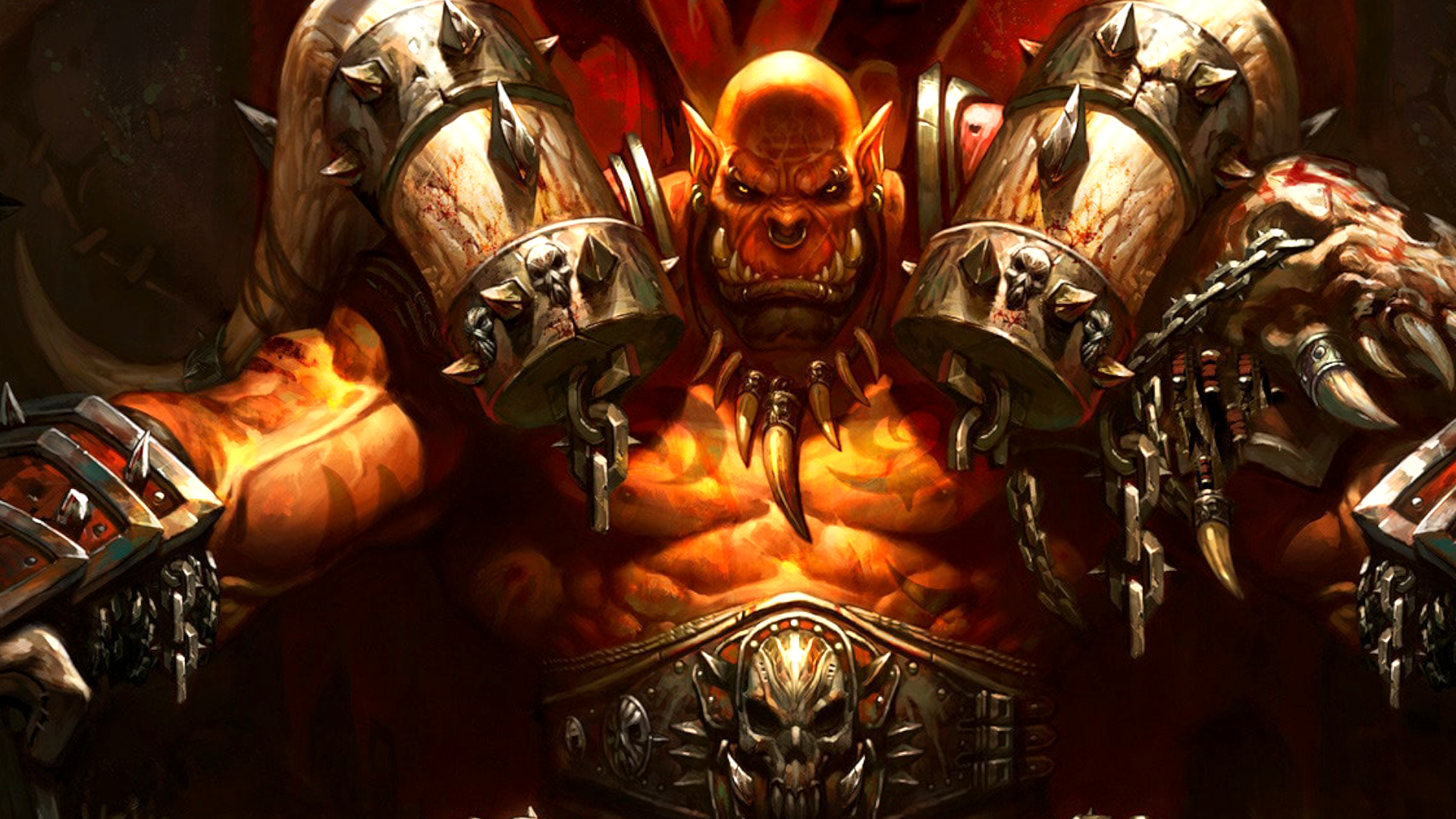Reports of World of Warcraft's death may have been greatly exaggerated, as Blizzard's GM proudly wheels out a graph showing it's doing really well—but no hard numbers
Things that make you go wow.

World of Warcraft will celebrate its 20th anniversary on November 23 this year, two decades in which it has established itself as the world's biggest and most pre-eminent MMO. WoW's refinement, scale, and endlessly absorbing mix of adventure and brilliant group mechanics has over its lifetime attracted well over 100 million sign-ups, a number that itself was revealed by Blizzard an entire decade ago in 2014. And here we run into one of the perennial frustrations with WoW: we know when it's doing well, because Blizzard tends to have a little brag about it, but we very rarely know just how well.
That's at times made it easy for people to claim that WoW is on the way out, dead game etcetera, and such chatter is often conflated with the reception to the most recent expansion, or some other expression of player discontent. In fact you could say "dead game" has become something of a meme for WoW, so often has the phrase been invoked, but the reality is that over my career I've seen WoW-killer after WoW-killer appear then disappear while the OG soldiers on.
Right now, it's doing rather better than soldiering on. Warcraft's general manager John Hight gave a talk at the recent Game Developers Conference titled "The First 30 Years of 'Warcraft': The Making of a Game Universe", a wide-ranging presentation that had one especially interesting detour into the historical patterns of subscriber numbers the game has seen (thanks, Inven).
Hight says that WoW has seen a repeated pattern in subscriptions over the game's lifespan, one that's clearly linked to the release of expansions. The straightforward version is that when a new expansion for the game releases, WoW sees a spike in subscriptions, which then slowly tails off over the following months (with occasional small bumps related to larger patches and additions). This pattern of subs gradually declining continues until the next expansion is released, at which point we repeat all the above.
Blizzard started to see the same thing with WoW Classic, along its own separate release schedule. WoW Classic's expansions would create their own surge in subs, often at a time when WoW subs were in their usual slow decline waiting for the next bump, which Hight says saw "almost as many new players coming in as other players going out" across the two games.
Updated WoW population chart from GDC with dates highlighted for expansions and COVID from r/wow
So far, so predictable. But Hight's talking about this to set the stage for how and why Blizzard's internal direction with WoW has changed, and the differences it's seen in this pattern as a result. The change began with Shadowlands, an expansion that saw the traditional spike in subs at launch, but was generally poorly received by players. The usual slow decline became in this case a propitious falloff, and the most worrying thing for Blizzard was that, when the next expansion Dragonflight came along, the surge in players was lower than expected.
The negative reaction to Shadowlands, in other words, not only saw WoW lose players faster than it had before, but had a knock-on impact on the next expansion's usual spike. "A lot of that was attributed to people losing their interest," said Hight, "and even in some cases their trust in us, during Shadowlands."
The biggest gaming news, reviews and hardware deals
Keep up to date with the most important stories and the best deals, as picked by the PC Gamer team.
The one ace up Blizzard's sleeve was that Dragonflight was received much more positively than Shadowlands, and had been designed to address many of players' most frequent complaints. Nevertheless that idea Blizzard had squandered its players' trust saw the developer decide to go further in communicating with things like a content roadmap, as well as a commitment to more frequent updates.
Over time this resulted in something Blizzard hadn't seen before. Rather than declining over time, Dragonflight's subscription numbers began to rise. What Hight is particularly proud of, however, is that this has resulted in WoW now having more subscribers than it did in November / December 2022, in the immediate aftermath of Dragonflight's release.
Now, here comes the fuzziness. Hight has a lovely graph to illustrate all of this, but it doesn't have any numbers on it. The last time Blizzard gave specific subscriber numbers was way back in 2015, around a year before the release of the Legion expansion, at which time it said the game had 5.5 million monthly subscribers, and also that it would no longer provide firm numbers.
Where does Hight's graph begin? Legion, of course, around a year after that estimate. But it doesn't give us any sense of what that Legion peak number was, so the graph could mean absolutely anything numerically. It certainly shows the trend that Hight's talking about, but certain reports have extrapolated figures from this that can't be stood up, and it's impossible to say whether the current subs numbers are either below or above that nearly decade-old figure of 5.5 million: all you can say is that, by Blizzard's lights, it's doing better than it has been.
Not the most sensational takeaway, then, but there is serious succour for WoW players in the story that Hight's telling. Essentially he's saying that Blizzard realised it screwed-up with Shadowlands, and the lesson it took from this was that it had to pay more attention to player sentiment, and move beyond its traditional top-down way of iterating on the game.
"These communities are deeply invested in the games, and they don't want to leave your game," concluded Hight. "Don't give them a reason to leave. Give them a reason to stay. And community sentiment during Shadowlands was a real wake up call for us. What our players wanted had fundamentally changed, and we hadn't recognized that. So we had to throw out our old playbook that had worked for us for 18 years, at that point. And now we're crafting a new playbook, but our players are co-authoring with us."
Hight concluded, rather grandly, by saying that this experience has created a new future for WoW and Warcraft more generally, as Blizzard looks to further involve players and move beyond its old way of doing things. The acid test will come later this year with WoW: The War Within, the first expansion in a trinity that represents Azeroth's 'new' future, while WoW Classic is going to re-run one of the most divisive expansions in the game's history: Cataclysm.

Rich is a games journalist with 15 years' experience, beginning his career on Edge magazine before working for a wide range of outlets, including Ars Technica, Eurogamer, GamesRadar+, Gamespot, the Guardian, IGN, the New Statesman, Polygon, and Vice. He was the editor of Kotaku UK, the UK arm of Kotaku, for three years before joining PC Gamer. He is the author of a Brief History of Video Games, a full history of the medium, which the Midwest Book Review described as "[a] must-read for serious minded game historians and curious video game connoisseurs alike."

